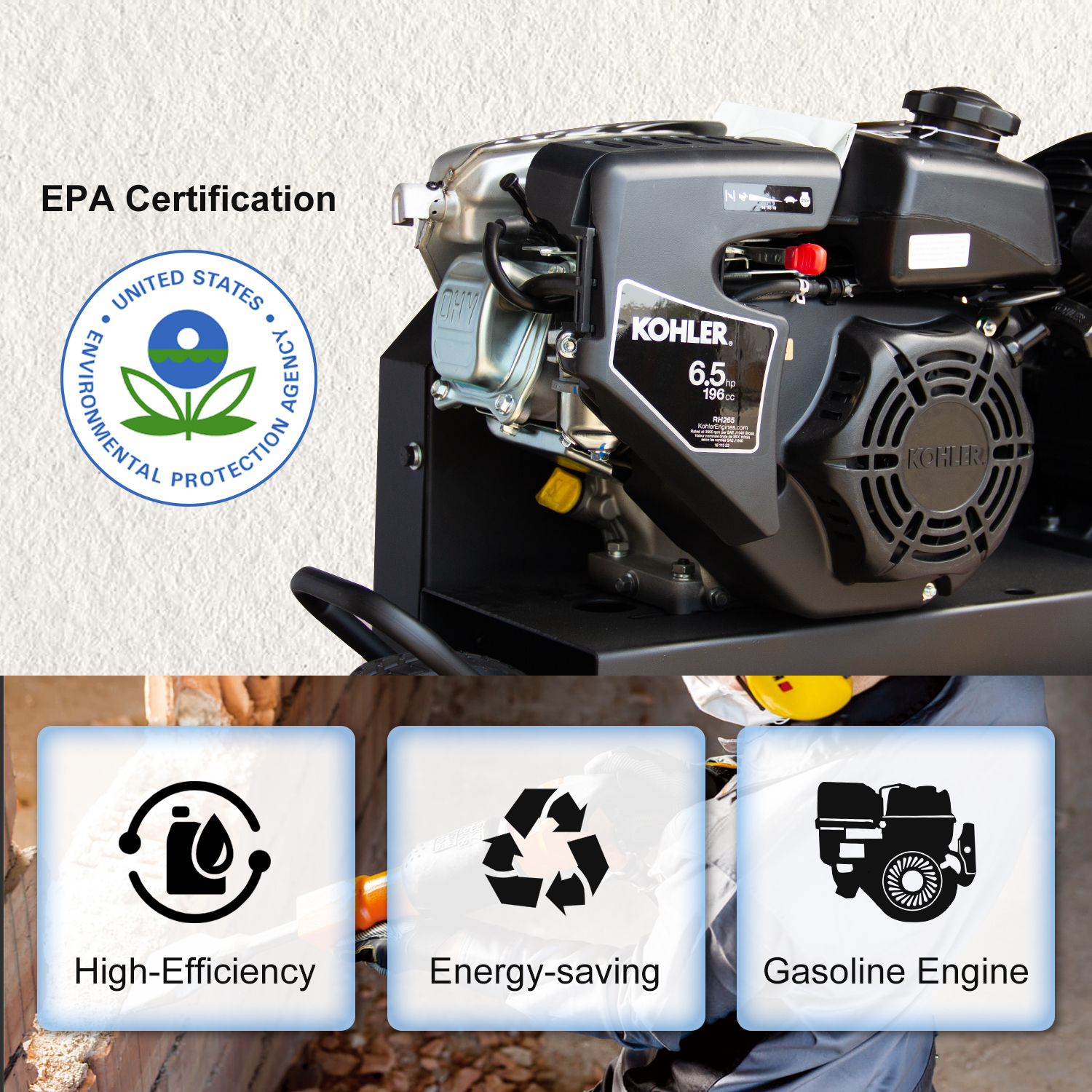As Earth Day approaches, the spotlight on sustainable practices intensifies across industries. Industrial compressors, integral workhorses in manufacturing, construction, and numerous other sectors, are significant contributors to energy consumption and carbon emissions. Reducing their environmental impact isn't just an ecological imperative—it’s a strategic move that can lead to substantial cost savings and enhanced corporate responsibility. At HPDMC, we've dedicated ourselves to developing solutions that help businesses meet these dual goals, and our line of eco - friendly compressors is at the forefront of this effort.
The Pressing Need for Compressor Carbon Reduction
Industrial compressors consume vast amounts of energy, often accounting for a significant portion of a facility's total power usage. This high energy consumption directly correlates with elevated carbon emissions, exacerbating the environmental challenges we face. In today’s regulatory landscape, stringent environmental laws are pushing companies to find ways to cut down on their carbon output. Moreover, consumers and business partners increasingly favor organizations with robust sustainability initiatives. By reducing the carbon footprint of industrial compressors, companies can not only stay compliant with regulations but also enhance their brand image.
Energy Consumption: A Tale of Two Compressor Eras
The Inefficiency of Traditional Compressors
Traditional piston - type compressors, while reliable workhorses in their time, are notorious for their poor energy efficiency. Their stop - start operational mechanism means they frequently cycle on and off, consuming excessive energy each time they restart. Without advanced control systems, these compressors often operate at full capacity even when air demand is low, resulting in significant energy waste. In many industrial settings, such compressors can consume up to 40% more energy than their modern counterparts over the course of a year, translating to higher operational costs and a much larger carbon footprint.
The Rise of Energy - Efficient Modern Compressors
The advent of modern compressors, especially screw compressors equipped with variable speed drives (VSDs), has revolutionized the industry. VSD compressors are intelligent machines that adjust their speed based on real - time air demand. When air requirements are minimal, the compressor slows down, consuming far less energy. As demand increases, it ramps up to meet the need, ensuring a consistent supply without unnecessary energy expenditure. This technology, combined with improved heat management systems and optimized compression processes, can lead to energy savings of up to 50% in some applications. For example, an automotive manufacturing plant that switched to a VSD - enabled screw compressor from an older piston model reported a dramatic reduction in both energy bills and carbon emissions.
A Roadmap to Greener Compressor Operations
Commence with an Energy Audit
The journey towards a more sustainable compressor system begins with a comprehensive energy audit. This assessment meticulously examines the current compressor setup, identifying inefficiencies like air leaks, suboptimal pressure settings, and outdated components. By understanding the existing energy consumption patterns, companies can formulate targeted strategies for improvement. At HPDMC, our team of experts can conduct in - depth energy audits, providing actionable insights that serve as the foundation for an effective upgrade plan.
Select the Right Compressor for Your Needs
Once the audit is complete, the next step is choosing the appropriate compressor for an upgrade. Several factors come into play, including the required air volume, pressure range, and the nature of the operation (continuous or intermittent). For most industrial applications, screw compressors with VSDs offer an ideal balance of efficiency and performance. However, for smaller operations with lower and more stable air demands, there are also compact, energy - efficient piston models available. The key is to match the compressor's capabilities with the specific requirements of the business, and HPDMC's diverse range of compressors ensures there’s a perfect fit for every need.
Implement Energy - Saving Accessories and Best Practices
In addition to upgrading the compressor itself, incorporating energy - saving accessories and adopting best practices can further enhance efficiency. High - quality air filters, for instance, improve air quality entering the compressor, reducing wear and tear and optimizing performance. Heat recovery systems can capture and repurpose the heat generated during compression, using it for other processes within the facility, such as heating water or spaces. Regular maintenance is also crucial. Scheduled checks, oil changes, and component replacements keep the compressor running smoothly, preventing energy - sapping breakdowns.

Make a Difference This Earth Day
This Earth Day, take a significant step towards a more sustainable future by reducing the carbon footprint of your industrial compressors. With the right strategies, from upgrading to energy - efficient models to implementing smart accessories, it’s possible to achieve both environmental and economic benefits. HPDMC is committed to supporting businesses on this journey with our innovative compressor solutions and expert guidance. Explore our range of energy - efficient compressors and start your path to a greener, more cost - effective operation today.
